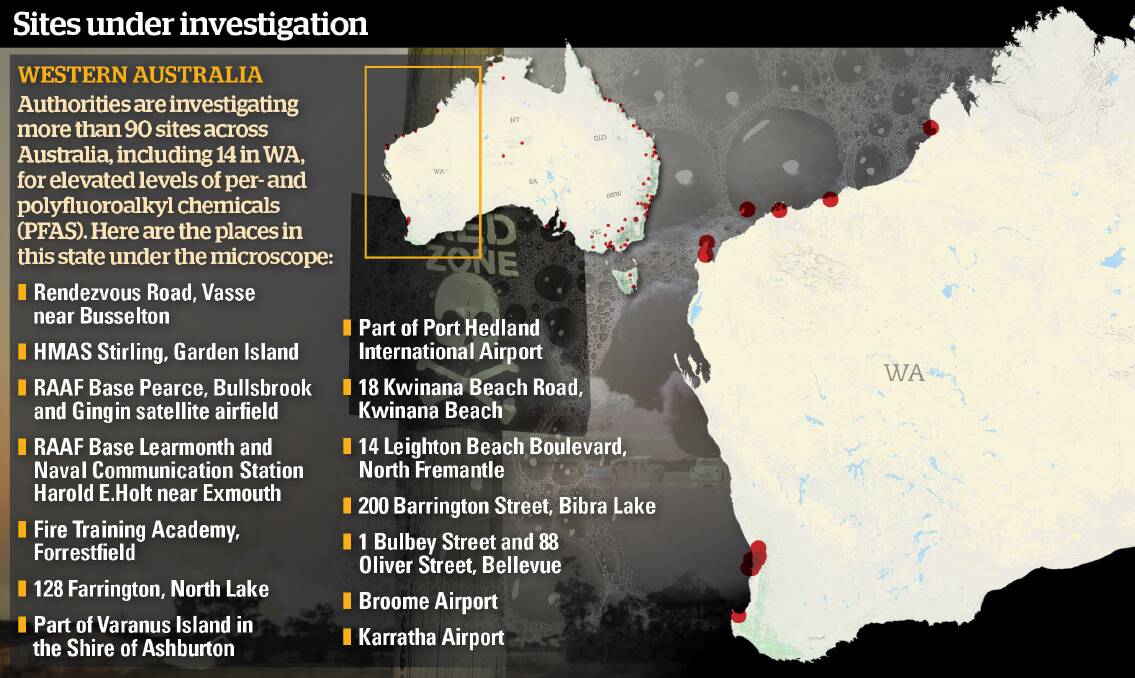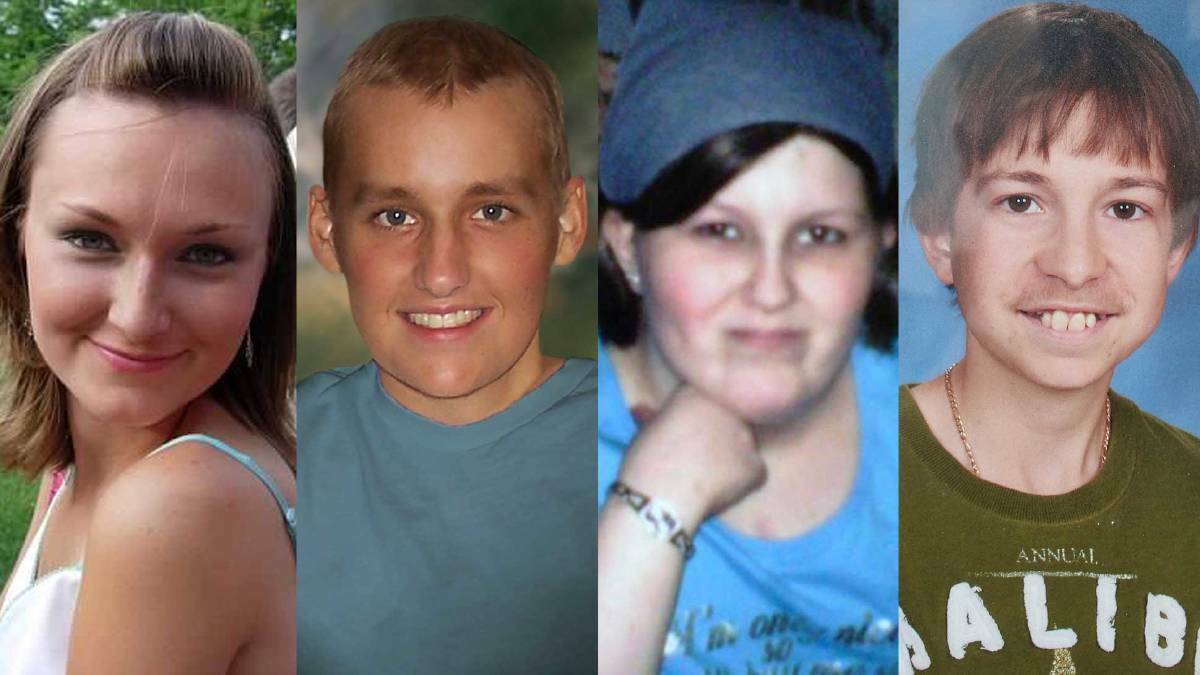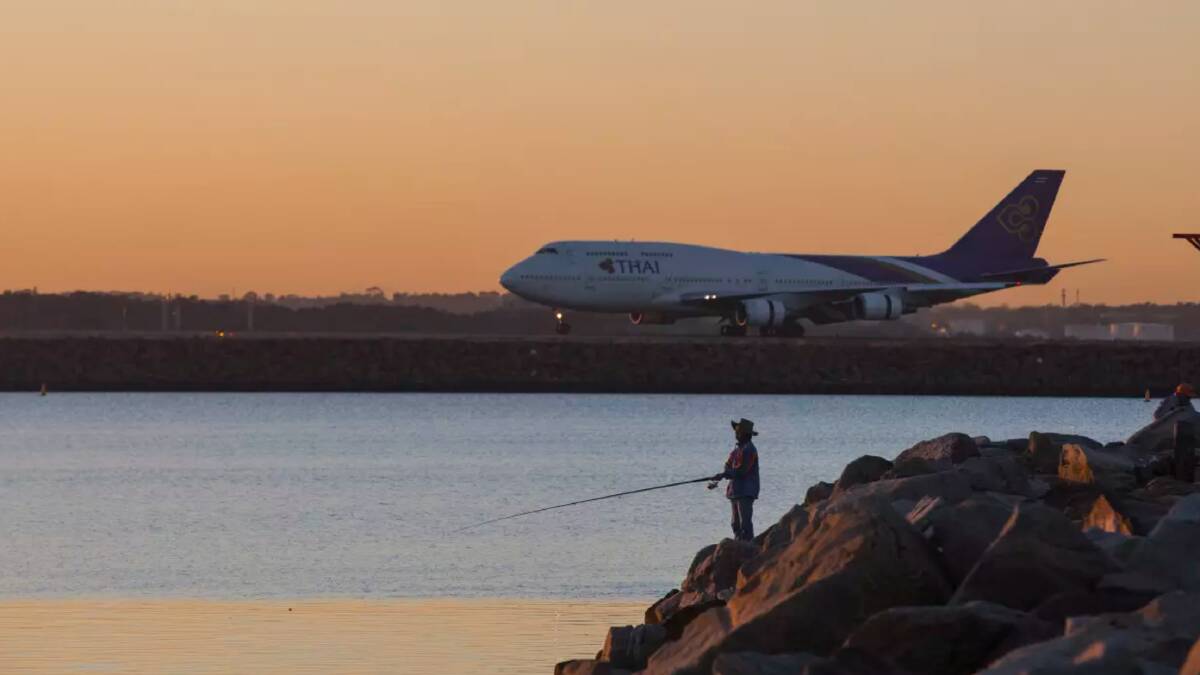
Rendezvous Road is one of 90 sites in Australia under investigation for elevated levels of per- and polyfluoroalkyl chemicals (PFAS). At all but a handful of the sites, most residents were oblivious to the toxic threat that lurks nearby.
Residents at 18 properties in Vasse were notified not to use their bores because noxious chemicals had leached into shallow groundwater from a historical unlined landfill.
A Fairfax Media investigation revealed over the weekend that at least 21 children at a US high school have battled cancer through their school years, or shortly after, while growing up in a city whose water supply was contaminated with PFAS.
In 2009, a global agreement was reached to ban one of the chemicals, perfluorooctane sulfonate (PFOS), by listing it on the United Nation’s Stockholm Convention.
In the years since, Australia is one of the only countries that has not ratified the decision. At least 171 countries have agreed to the phase-out, including the UK, Germany and China.
The federal government is defending multiple class actions from towns across Australia where contamination has occurred.
The assistant Environment Minister Melissa Price, who has responsibility for the issue, said the federal government was "examining management options" for a phase-out of PFOS and other related chemicals.
"A decision on ratification of the listing of PFOS under the Stockholm Convention has not been made at this time," Ms Price said.
Fairfax Media has previously revealed 50 cancer cases over a 15-year period on a road near the Williamtown air base, an area that has also been heavily polluted with PFAS chemicals from firefighting foam.
The Department of Health maintains there is no consistent evidence the toxins cause “important” health effects, in contrast to the US EPA, which has concluded they are a human health hazard that - at high enough levels - may cause immune dysfunction, reproductive issues and certain types of cancer in humans.
The City of Busselton have advised the levels of PFAS identified at affected properties on Rendezvous Road were considerably less than what had been identified at defence and airport sites.
The city’s director of engineering and work services Oliver Darby previously told the Mail testing in accordance with statutory requirements indicated levels of hydrocarbons, metals, nutrients and PFAS above background levels on some properties along Rendezvous Road.
Mr Darby said as a precautionary measure (and in accordance with regulatory guidelines) some residents have been advised not to use groundwater from their shallow bores.
Some residents were advised not to consume fruits from trees with roots intercepting the superficial aquifer unless they test those fruits and they are deemed suitable for consumption.
The properties affected in Vasse sit north-west of the Busselton Waste Facility with some properties adjoining the Queen Elizabeth Avenue drain which runs into Geographe Bay.
Department of Water and Environment Regulation acting executive director science and planning Paul Brown previously told the Mail that groundwater bores located on either side of the road in the vicinity of the drain had not identified significant contaminants.
However, Mr Brown said the drain had not yet been tested for PFAS compounds which had recently been identified in shallow groundwater.
While the drain that flows into the Geographe Bay along Queen Elizabeth Avenue has been monitored, Mr Darby said to date, there had been no evidence the former tip site was a contributing source of contamination of this drain.
“Further investigations include additional testing of the Queen Elizabeth drain and other potential sources of contamination in the vicinity of the area under investigation,” he said.
“These days new waste disposal sites are designed with very strict environmental controls that prevent leakage of contaminates into the groundwater. Unfortunately that was not the case in years gone by.
“Like many other local governments the city is faced with contamination issues from sites that operated decades ago.”
The investigation by Fairfax Media found man-made PFAS chemicals were a lucrative discovery for industry due to their unusual properties: they have been described as “virtually indestructible” in the environment and repel grease, oil and water. They were manufactured by Fortune 500 company 3M for 50 years, with the two best known of the family being PFOS and perfluorooctanoic acid (PFOA).
PFOS was the key ingredient in 3M’s popular fabric protector Scotchguard, and was used widely in firefighting foams, food packaging and metal plating. The company also manufactured vast quantities of PFOA for sale to Dupont to produce Teflon cookware.
By the time 3M made the surprise announcement it would be voluntarily exiting the PFAS business in 2000, PFOS had contaminated the blood of more than 95 per cent of the human population along with wildlife in remote corners of the globe.
The chemicals still pose a threat in Australia today, mainly because of their use Aqueous Film Forming Foam (AFFF), a fire retardant manufactured by 3M and used by the military, commercial airports, fire brigades and heavy industry for decades. In many cases the run-off was flushed directly into the environment following training exercises.
The sites identified across Australia
In NSW, 15 sites are under the microscope, including eight fire brigade training grounds, Kemps Creek and Westleigh in Sydney among them. Matthew Jigalin, 20, lives a street away from the Westleigh Rural Fire Service ground and regularly mountain bikes in the area. He did not know about the PFAS.
Neither did Stefan Popoksvi, 20, who recalled swimming in the creek near the site as a child.
Long-time resident Warren Burgess, who had followed coverage of the PFAS contamination near Newcastle, said when it came to his neighbourhood, “we’ve had no warning, no news at all”.
Four commercial airports in NSW are under scrutiny, including Camden and Bankstown Airports. The Botany Bay area, near Sydney Airport, is a known hotspot and fishing restrictions were introduced at the end of last year.
The NSW Environment Protection Authority suggested people limit their consumption of eight species of fish caught from Port Botany and the Georges River. But when approached by Fairfax Media, the huddle of fishermen casting their lines into the bay at the mouth of the Cooks River near Brighton Le Sands said they were unaware of any guidelines.
A rock fisherman fishes at Botony Bay at the mouth of the Cooks River, where the EPA has issued warnings about eating too much of certain fish because of chemical concentrations. Photo: Jessica Hromas
“I haven’t been told,” Joey Carino said around sunrise on Wednesday. Soon after he reeled in a silver trevally, one carrier of the chemical spreading through Sydney in food, water, soil and air.
It was a similar story out near another RFS training facility at Kemps Creek, also the subject of an extensive PFAS investigation. Bruce Emms, who worked for a road construction business next door, said “they haven’t said anything about it”.
Fairfax Media canvassed neighbours and found all but one were unaware of the contamination or investigation. This included market gardeners picking produce ahead of weekend sales.
But an RFS spokesman said Kemps Creek residents and businesses had been notified through door knocks, community meetings, flyers and online. Only one area had tested above the PFAS acceptable guidelines while recommendations not to use surface water for drinking, cooking or watering produce were precautionary.
As for the training site at Westleigh, the spokesman said residents were not in the PFAS “migration pathway” and so not at risk, while bushwalking and mountain biking groups had been notified.
“Initial testing has shown there is a very low risk to the community, including bush walkers and mountain bike riders,” he said.
.




